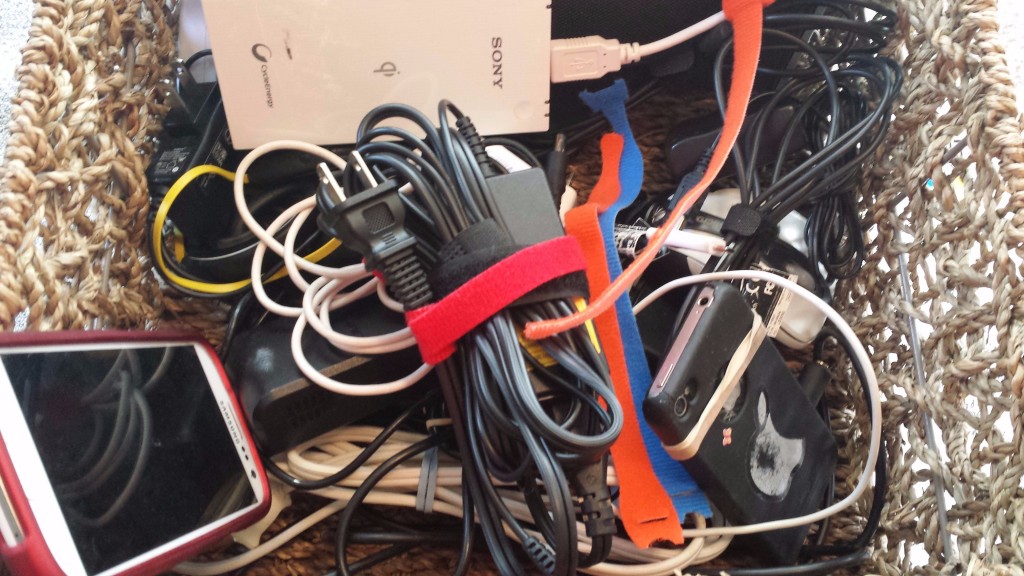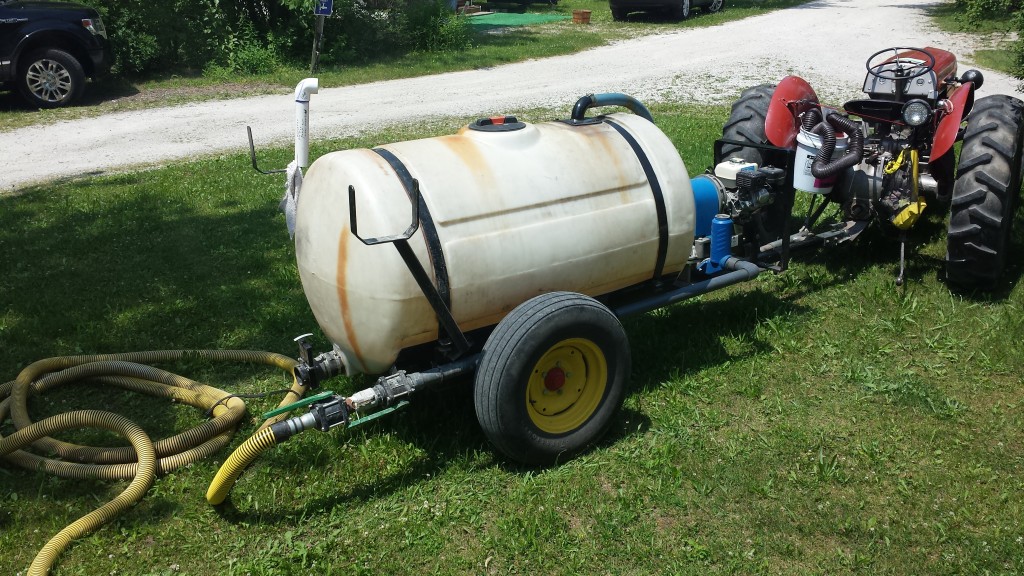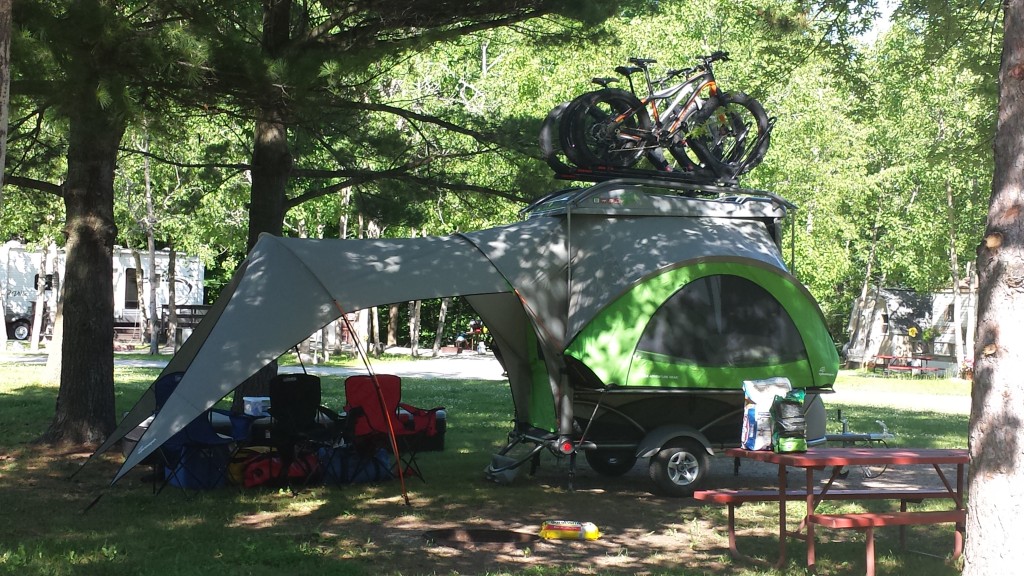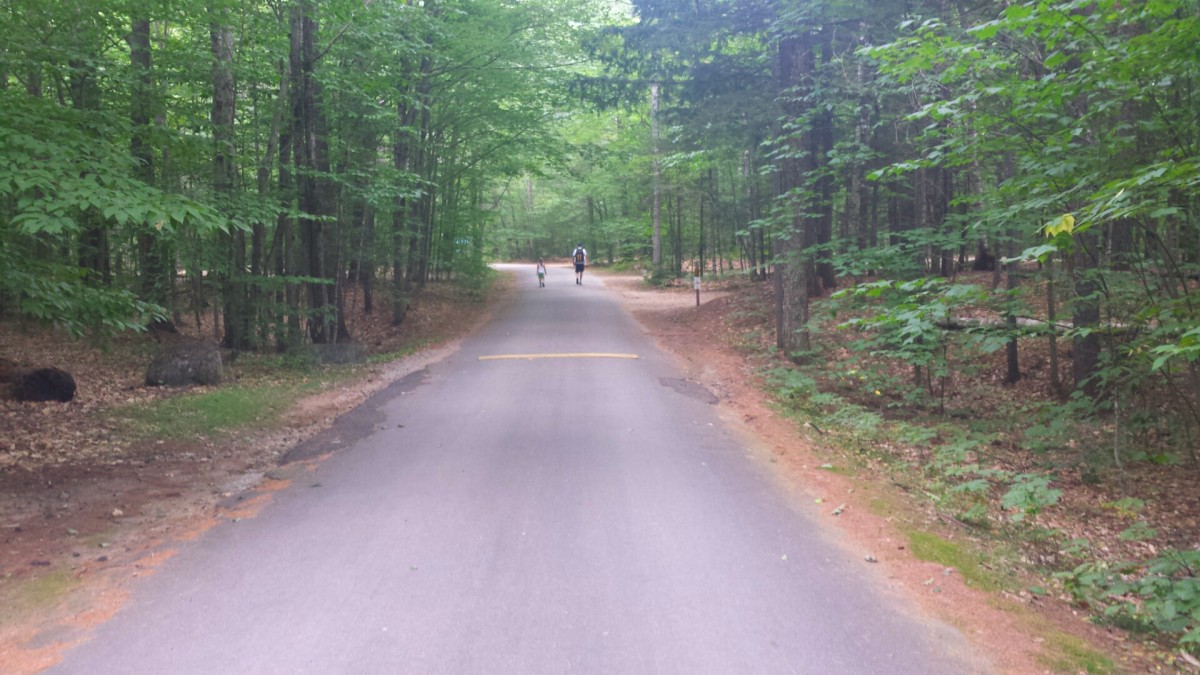The first time I camped, I did so with my best friend and we did it for three months in the summer of ’96 with a tent, a tiny portable propane camping stove, matches, wood, some sleeping bags, some canned beans and bagels, and a roadtrip CD collection. We were pretty basic in our needs and wants, we covered a lot of ground, bathed every so often, hiked a lot, thrifted in the cities, made really strong campfire kettle coffee and enjoyed long and intense conversation and silence. We loved it, and we didn’t want it to end.
I camped a few more times after that first epic roadtrip. One of those times was spent with Scot a long time ago during our first round of dating. We stayed in Wisconsin in a tent, and it was very, very cold. The physical distance traveled may have been short, for we were living in Chicago at the time, but the foundation for the romantic and spiritual ground we would cover later on in our lives was established then. We biked around Kettle Moraine, drank warm spiced rum and cider and took in the scenery, cold air and all. We loved it then, and, somewhere deep within us both, we knew that we would camp with each other again someday.
Twenty years later, we are camping again in our ample Salem travel trailer, this time with little Luna, a six-year-old driving force of nature. There are homemade beans and sourdough pizzas. There is a camper stove, but more often we use the wood and matches. There are no sleeping bags, but instead mostly cozy beds and a killer portable hammock, which we use often. There is not kettle coffee, nor drip for that matter, but rather Moka Pot, Aeropress or French Press versions made-to-order. Our roadtrip CD collection is decent, and we are covering a lot of ground most definitely, sometimes white-knuckled and frustrated, mostly gleefully, joyfully. We often are steeped in heavy conversation and silence, albeit intermittently if Luna has anything to do with it, and she does.
And, for the record, none of us is bathing very regularly.
Camping is a little different for us now with a kid and a camper, mostly in the form of typical, basic family demands with child in tow, general upkeep of our rig, and the maintaining and sustaining of our work and creative lives. Our time is hardly ever simply our own on an individual basis. Most of this, of course, is by choice. We could have gone the route of family tent, car camping, yurt or large (very large) fifth wheel or RV. I could have chosen not to write again and Scot could just practice one-track work. Luna could be schooled, with just the summers off, or perhaps we could have found a travelling nanny. We could have waited until we had loads of money again, just to play it safe. But what fun is that? Not much fun when it’s more important to be untethered from the things that keep us bound. The want for as much freedom as possible, the need to work, the inspiration to write, safety, efficiency and comfort all drove our decision to have a pull-behind tiny house on wheels. Lots of folks are doing what we are doing in and with an endless assortment of recreational vehicles. Not much else says freedom like camping and travel.

Furthermore, I would say that our definition of camping — the things and ideals that bring us joy from camping — is still the same as it ever was: we want to be close to nature, mostly in peace and quiet, among the trees and under the sky; near water is nice; smelling the rain and dirt and camping gear; writing some, eating some, loving some, imbibing some; thinking, walking, hiking, stargazing, campfiring all still make the list. And, it seems, many folks still feel the same as we do. Campers are camping.
But there is no doubt that camping is much different now, not just for us as a modern family with more updated needs in travelling by camper, but also throughout the camping scene in general. It has not taken us long to sense this and hear this in and among campgrounds, the caretakers, managers, campers and residents: Camping has changed. Campgrounds are not filled with vacation-seeking families. Instead, they are filled mostly with seasonal campers, people that live fulltime or part time on leased or owned allocated sites on campground properties. It is, in fact, how campgrounds are making most of their money these days, and it is changing the look and feel of the camping experience.
I wasn’t sure if what we heard was true, so I researched it. Sure enough, there is a decline in camping generally as families camp less and stay home more. Online headlines read, “What is Killing Camping?” (Treehugger, July 2008); “National Park Statistics Show Decline in Camping” (The San Diego Union-Tribune, May 2014); “Why Aren’t Canadians Camping Anymore?” (No! Not the Canadians!) (The Globe and Mail, February 2015); and “Camping & RVing on the Decline in Great Britain” (No, not the Brits, too!) (Woodalls’ Campground Management, July 2013). Or, formerly roaming camping families find it easier and financially more accessible to park their rigs in one slip in a campground of their choice and stay there all summer long. The costs for long term stay is often thirty to fifty percent off the regular price of camping. Deduct the cost of fuel for constant hauling and wear-and-tear on vehicles and it becomes easy to understand why folks are choosing to stay put. More headlines verify our suspicions: “Western Families Discover the Merits of ‘Seasonal’ Camping” (Camp-California, date unknown). Hmmm …
Financial benefits seem to go both ways for campground and seasonal camper, but the increase in seasonal camping isn’t the only reason that there is a change in the campground environment. The top reasons most often cited for a decline in camping are that families have no time with school, work and family obligations, noted in, for example, a Los Angeles Times piece, “Fewer Americans Camp, Saying They Have No Time” (January 2012). For these very reasons — time taken away, or rather energy going toward so many other things — we are doing it on our own so that we can reclaim time and energy for ourselves and experiences. We do not want to be exhausted by things that are out of our control.
However, we are still a (more) modern family; we do different things and we use different things as times are different. We as a family, whose interests are shared and also dissimilar among us three as a unit and as individuals, have more unique requirements and/or desires that also add to the changing landscape of camping. It may not be necessary for me to have within the confines of a campground a jumping pillow, horseshoes, cable, miniature golf, theme nights or whatever else there is to offer. My personal definition of camping — the kind that I would like to experience most often as 60:40 or 70:30 or even 80:20 introvert to extrovert, respectively — is not what the family needs mostly and is not necessarily a form of contentment for us all collectively. As I mentioned, fundamentally, I believe that we want the same things out of camping and travelling: we enjoy hiking and walking; we like to swim together; sometimes all three of us sit around the campfire at the same time; we share snacks; we talk; we investigate nature; we look at the stars; we lie in the hammock and rest. But our modern camping family requirements are advanced now, and how we act as individuals requires a bit of help from a campground. In fact, after a family discussion about what each of probably needs, we have come to the conclusion that campgrounds must include specific amenities for us to maintain a long-term stay. This does not mean we are glamping. This does not mean that we aren’t practicing basic stuff as camping goes. What it does mean is that our camping/travel adventure has some must-haves inside and outside of the WordCamper in order to sustain long term travel.
Cable management. Like most families, we have devices. We have phones and tablets and computers, which all come with chargers, which often require extension cords, which most definitely require electricity and outlets. Therefore, part of our campground slip requirement is that it offers thirty-amp into which we can plug. Scot installed a media center with a terabyte of storage for everyone’s use. From it he can work, Luna can play, and all of us can listen to music or watch movies that we ripped to it, established in anticipation of little to no WiFi, but generally with electricity. The eleven-pound television, the tiny Bose speakers, the fifteen-inch computer and all of its cables require connectivity. Running through the underbelly of the media center is a small network of cables and surge protectors, and part of one of the bunks holds pretty Velcro-wrapped bundles of chargers. There is simply no way around it: Working remotely via the Internet from our little WordCamper comes with a basket of cables.

WiFi. Obviously, our requirement to plug into a 30 amp electrical outlet might be less of one if our business and writing and one of Luna’s favorite pastimes were anywhere else other than online and in the Cloud. Therefore, a campground with a strong Internet connection and/or its location on a Verizon Wireless Zone Map is becoming part of the equation more than ever. Scot’s business is web development; he creates web applications, including websites. Although he can work locally on his computer, testing, researching, connecting, pushing to production and final results all happen online. Meanwhile, as a writer, I can write offline with tools such as Writer. However, I work exclusively in the Cloud otherwise, even using a Chromebook, which only works in the Cloud, so WiFi is also important to me. Finally, Luna plays Minecraft with kids from all over the world and is one of the many followers of Minecraft videos, hoping one day to make her own. From a PC she can play on one of several servers from various locations, and YouTube is the source of Minecraft video heaven. WiFi is important to her, too. We almost always can rely on Scot’s Hotspot for guaranteed connectivity, but, ideally, we would utilize a campgrounds strong, reliable WiFi connection so that Scot’s phone doesn’t melt or explode from overuse.
Off-site work location. Although we all work and play in the camper together often, it helps to have other places to do so, especially for Scot, for the sake of concentration, for more private business calls, for better Internet connection, which often can be found closer to the campground store or office. Scot rises early naturally and begins his work before I wake, and definitely before Luna wakes. He can be very productive then — that is if he doesn’t have to make any calls and/or the WiFi connection is strong. A campground we visited in southern Wisconsin offered sketchy WiFi, mostly due to its more rural location, often bouncing between 3G and 4G. Furthermore, it didn’t have any communal location — other than the typical Wisconsin camp bar — for him to work outside of the camper. All of us were less productive that week, which is okay for me and Luna, but not so much for Scot. He had to drive to town often to work just for better Hotspot connection. We don’t want to make this a habit, although becoming a local is fun. We want to work (and play, for Luna) from the WordCamper, then go out and explore and play together. But, if that happens, if Scot must go away to work, or if he or I need some time to work more productively, it helps if the campground has some places to go and some things to do. After all, we are camping and travelling and working.

Modern Campground Amenities. Jumping pillows, mini golf, petting zoos, go carts, wading pools, arcades, activity/movie huts, theme nights and splashgrounds are among the many newer campground activities in which one could partake should one become bored of the same old hiking, biking, reading, stargazing or bird watching. So far removed from modern camping was I that I was completely surprised by some of the offerings of our initial campground visits. At first I questioned our participation in stuff like this: jumping pillows require constant electricity to stay inflated; arcades and movie huts seemed to defeat the purpose of camping; petting zoos and theme nights seemed to just emphasize that our culture doesn’t know how to think for itself anymore. But that continued thinking would kind of make me a jerk. We want to engage in activities that help us all thrive, and fun, play and diversion can come from almost anywhere and anything and help us as a family and individuals as we maintain and sustain our travel and work enthusiasm.
We like to swim a lot. Swimming is fun, stimulating and refreshing. Yet, as much as we like a great swimming lake or pond, we’re a little bit freaked out by excessive goose poop or swimmer’s itch. We appreciate and look for campgrounds with nice pools, where we all meet lots of families just hanging out and camping. Luna loves, loves, loves the jumping pillow, so much so that it occasionally has created distraction in our workflow from her constant want to jump. But jumping is fun, and now we all like to take turns experiencing mid-air suspension should we find a jumping pillow in our campground. We also enjoy kayaking, canoeing, mini golf, frog and fishing ponds, and horseshoes is something we’d like to play with Luna, so if these amenities are included in the campgrounds we visit, we will happily engage in them if we have the time. We have found that some of these newer campground perks help us stay a little more balanced as a family. We will continue to consider or include them in our camping requirements. Why not?

Full Hook-up. To the uninitiated, a full hook-up in a campground includes 20/30/50 amp electricity and access to water and sewer connections, and often cable. If what is available only includes water and electricity, it helps if the campground offers a honeywagon service for that sweet removal of dishwater and poo from an RV. However, we find that having a full hook-up makes life much easier for us, for grey water tanks fill very quickly with only forty gallons to spare. Just think about how much water you use everyday brushing teeth, showering or bathing, washing dishes and clothes and you may be able to imagine what rationing might be like.
For some purists, RVs and their modern requirements are the bane of camping’s existence, but I don’t believe that is a very common feeling. Unless one is backpacking in and/or hammock camping, even tent campers have their requirements and gear, particularly a need for electricity if one is planning on charging a device of any kind. We are really good at having and using less, but we still enjoy some simple pleasure and basic needs.

There are more bits that we consider and will add to this list as we continue to travel. But as we do so, and as we experience what many families are doing now as times change and their lives change, as campers and campgrounds evolve, and we witness the parade of highway traffic that includes fifth wheels, RVS and bike-filled bike racks, I have been wondering: What is camping anyway?
I offer some food for thought.
From Wikipedia:
“Camping is an elective outdoor recreational activity. Generally held, participants leave developed areas to spend time outdoors in more natural ones in pursuit of activities providing them enjoyment. To be regarded as ‘camping’ a minimum of one night is spent outdoors, distinguishing it from day-tripping, picnicking, and other similarly short-term recreational activities.”
From Merriam-Webster:
“a: a place usually away from urban areas where tents or simple buildings (as cabins) are erected for shelter or for temporary residence (as for laborers, prisoners, or vacationers); b: a group of tents, cabins, or huts; c: a settlement newly sprung up in a lumbering or mining region; d: a place usually in the country for recreation or instruction often during the summer; also: a program offering access to recreational or educational facilities for a limited period of time; e: a preseason training session for athletes”
From Google:
“The activity [of] spending a vacation living in a camp, tent, or camper”
From Urban Dictionary (wildcard definition):
“The act of staying in one spot in a map in a first person shooter video game to gain a tactical advantage over an enemy or group of enemies.” (My personal favorite.)
Clearly, camping is as it always was, which makes me consider that perhaps its just a shift in who does what more and how. If the style of camping is a sign of the times, then might it become just as much creative form of expression mixed with access, need and want? So, as an artist and camper, I reconsider this age-old question: What is art anyway?
From Wikipedia:
“Art is a diverse range of human activities and the products of those activities, usually involving imaginative or technical skill. In their most general form these activities include the production of works of art, the criticism of art, the study of the history of art, and the aesthetic dissemination of art … Art may be characterized in terms of mimesis (its representation of reality), expression, communication of emotion, or other qualities … Though the definition of what constitutes art is disputed and has changed over time, general descriptions mention an idea of imaginative or technical skill stemming from human agency and creation.”
Yes.
From Merriam-Webster:
“Something that is created with imagination and skill and that is beautiful or that expresses important ideas or feelings.”
Yes.
From Google:
“The expression or application of human creative skill and imagination, typically in a visual form such as painting or sculpture, producing works to be appreciated primarily for their beauty or emotional power.”
Yes.
From Brainpickings (a few wildard samples):
“Art is not a thing — it is a way.” (Elbert Hubbard)
“Art enables us to find ourselves and lose ourselves at the same time.” (Thomas Merton)
“Art is a discovery and development of elementary principles of nature into beautiful forms suitable for human use.” (Frank Lloyd Wright)
“Art is the most intense mode of individualism that the world has known.” (Oscar Wilde)
Yes, yes and yes.
So if the art of camping is spending at least one night out in nature in a tent, cabin or camper and embodies a diverse range of human activities, involving imagination, technical skill and an expression of important ideas and feelings, then I am all for it. If our art of camping includes some modern amenities, then I believe it to be wonderful and freeing and thrilling, even if it sometimes can create frustration and distraction and fatigue. Our more than day-tripping requires much more for daily existence over a year and a half, but I’ll take it. In fact, I’ll find it. We’ll find it. We’ll make it happen.
Constant happiness is mostly an illusion. In order to maintain and sustain happiness, peace and joy, one must become creative in spirit and effort and willingness to make them and keep them. It is, in essence, the art of living. And in this time of our lives, we have certainly become more creative in our living, but the need to stay creative in sustaining it hasn’t changed. Obviously, the cultural shift in camping reflects that shape-shifting; change and going with the flow are required to sustain happiness and live within one’s means. It is fun and interesting and exciting to be suspended in mid-air, hammock-style, swinging slowly in our own creative camping cadence. Much like our life untethered. Extricating ourselves from one way of being offers up something new to consider, other ways of being. Move, move, move, and then be, until there is more to consider. It is our art of camping that allows us to consider it more freely.
I like camping. It is hard work sometimes, but it’s nice to have returned to it. Here’s to life untethered … with free, uninterrupted WiFi. And a pool.



